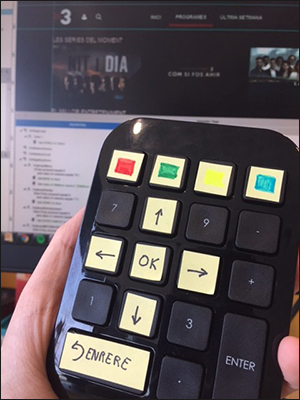Take outs:
- Design thinking is an innovative way to apply a customer centric approach to test new ideas and business solutions, and to develop prototypes.
- Design thinking allows you to fast-forward into the future to see your finished product and customer reactions, before making any expensive commitments.
- Google Ventures Design Sprint is one design thinking process which can be followed to achieve innovation goals in 5 days.
It’s no secret that customers expect brand innovation and superior service. However launching a product or service is traditionally expensive and many of them fail.
Today, there are an increasing number of companies that use design thinking to help avoid losing months and dollars in decision making processes and beaurocracy, and to get to market with less risk and cost.
Design thinking is a methodology or process that at its core is about solving complex problems by putting yourself in the positon of customers to feel what they feel and think what they think. Using tools such as prototyping, voice of the customer and systematic reasoning, the methodologies are just as appropriate in tech companies as they are in service industries.
One of the design thinking processes available in the market is Google Ventures Design Sprint, and was discussed in detailed by MASS Founder and Creative Director Tim Kotsiakos who spoke about it at the Netwealth webinar titled, ‘Improve your business with Design Thinking’.
“Google Ventures Design Sprint (GV Design Sprint) is a design thinking process carried out over a period of five days. It helps to answer critical business questions through design, prototyping, and testing ideas with customers, all which work together to enable your business to deliver a new or enhanced product or service to market sooner and more effectively,” said Kotsiakos.
According to Kotsiakos, the GV Design Sprint is suitable for businesses of any size, from start-ups through to large blue-chip corporations and everything in between, and is used for a wide range of issues, opportunities and more. It takes elements from business strategy, innovation, behavior science, design thinking, and more and packages it into a tried and tested process that any business can use.
“Design Sprint is a process that suits anyone who wants to take advantage of an opportunity, resolve a problem or develop upon an idea. It can be used for developing products or product features, websites, marketing ideas, mobile apps, enhancing the customer service experience, increasing leads, improving efficiencies within business divisions and much more.”
From an advice practices perspective, Kotsiakos says the design thinking process could be used to explore new services offerings, or at least refine existing ones. Things such as cash flow management or the exploration of new online technologies appropriate for a younger segment of the market, like Gen-Ys. It can also be used to test alternative forms of communications, like online virtual meetings or chatbots
How does Design Sprint work?
According to Kotsiakos, a sprint enables you to shortcut the debate cycleoften involved in moving forward into a single week. The process allows you to get clear data from a realistic prototype, and all you need is a dedicated space and the right team to start.
“It’s important to set the scene for a sprint. This means a suitable space, stationery supplies and the right team. Your team should consist of the following stakeholders: the decider, the finance expert, the marketing expert, the customer expert, the tech/logistics person and the design expert,” he says.
What does a typical Google Ventures Design Sprint look like?
According to Kotsiakos, every sprint has the same structure, as outlined below.
Day 1 - Understand
Agreeing on a single and focused sprint goal and then mapping out the challenge and issues are the main objectives for the day. Are you looking to test a new pricing model? Create a new communication tool? And for which customers? Who are the competitors?
Kotsiakos says sometimes it's good to actually get everyone to try and write what they think the goal is, and put it up on a wall, and collaboratively agree on what the goal is. Sometimes it's just better if the boss comes in and says X is the goal.
Either way, the important part of this process is to keep a record of all the questions the group has as the goals are defined. Post it notes are perfect for this. The discussions that unfold not only create a path for the week but also provide an opportunity for stakeholders to share their thoughts in order to decide on an end-target, which should be a manageable piece of the problem to solve in one week.
 |
 |
City of Denver: Using Design Sprint Methods to Reimagine Public Art (Day 1)
Source: https://sprintstories.com/part-one-learning-how-to-design-sprint-at-denver-startup-week-22a9d0bf6f03
Day 2 - Diverge
After spending Day 1 trying to understand the problem, understanding your customer challenge and goal setting, today is about inspiration, and bringing people in the room to throw around ideas, stories and customer experiences.
Don’t be scared to bring in external experts who may bring a different perspective to the discussion.
Here you will develop loads of solutions for the problem you are trying to solve.
The technique encouraged to communicate one’s idea to other team members is to draw or sketch the solution on paper. This is not a drawing competition, more a visual way to communicate the idea.
Kotsiakos explains: “Each person should fold up their A4 bit of paper into eight squares. Then in each frame draw or describe their solution from beginning to end, describing the customer experience as a story.
Cards are also a good tool, as they are a little bigger than a post it note, so they can contain a little more detail as to what the idea is.
Also today, you need to think ahead to day 5. If you haven’t already, you will need to recruit some customers that fit your target profile, for the validation process.
City of Denver: Using Design Sprint Methods to Reimagine Public Art (Day 2)
Day 3 - Decide
Today you start critiquing the stack of solutions your team has come up with.
All the ideas and solutions should be going up on the wall, whether they are post-it notes, cards or A4 pieces of paper. Today you will get the team to identify those ideas and solutions that make the most sense to achieving the goal identified on Day 1.
A simple technique to use is to give everyone a number of ‘voting’ red dot stickers which they can place on the ideas on the wall, with the end result being a heat map of the best ideas. Make sure to give the boss a ‘supervote’ to prevent going down the wrong path.
Kotsiakos states: “At this point, you really want to start avoiding new ideas that are coming to the table. You want to put them to the side. It is the time to cull.”
In the afternoon on Day 3, you take the best bits of the everyone’s solutions and start weaving it into a story board, taking the best bits from everyone’s sketches done on Day 2.
The storyboard is a detailed view of the end to end journey a customer will have and becomes a step-by-step plan for the prototype that you will do on Day 4.
Kotsiakos explains: “Doing it as an end to end story, or as some describe ‘the customer journey’, allows you to properly think through the problem and develop an appropriate solution. It also allows you to identify ideas that will just not work.
 |
 |
City of Denver: Using Design Sprint Methods to Reimagine Public Art (Day 3)
Day 4 - Prototype
Today the prototype is developed. The key is to adopt a “fake it” philosophy when turning the storyboard into a prototype. The key here is to focus only on the customer-facing elements of the prototype.
Kotsiakos explains an example: “I think in the Google sprint book they use an example of a robot that they wanted to test to greet hotel customers. They used a rubbish bin, and someone behind the scenes listening to the customers asking this thing questions and responding. It would take months and months of work to try and build that, but they could do it within a day just with that rubbish tin.
Today you will also prepare for Day 5 and test the prototype and develop customer interview scripts.
 |
TV3, a públic Catalan television, based in Barcelona devised the following TV remote prototype. They were looking to answer the following Sprint questions: 1. How can we make the service more easy to navigate with the TV Remote and communicate with the rest of our apps and website? 2. How can we make the users come back to consume our VOD, and became addicted to our service?
Source: https://sprintstories.com/how-we-used-design-sprint-to-change-our-hbbtv-service-ab02cb6b76df
Day 5 - Validate
Today is the feedback day. You’ll test the prototype with customers, and collect feedback by interviewing them and watching them react to your prototype. According to Kotsiakos, it’s the final step that makes the whole process worthwhile.
“The feedback garnered on the final day makes undertaking this design thinking process worthwhile. At the end of the day, you’ll know how far your business has to go and what needs to be done in order to achieve a successful to-market transition.”
Test your ideas quickly and effectively
Design thinking is a technique an organisation can use to test business ideas, prototype new concepts and understand customers better. It allows you to fast-forward into the future to see your finished product and customer reactions, before making any expensive commitments.
To hear the full presentation, Improve your business with Design Thinking, click here or if you would like to speak to a member of the Netwealth team, please contact your BDM or email us.



